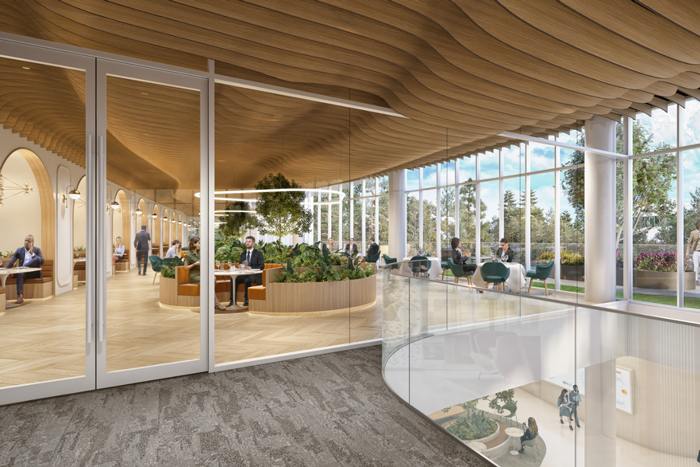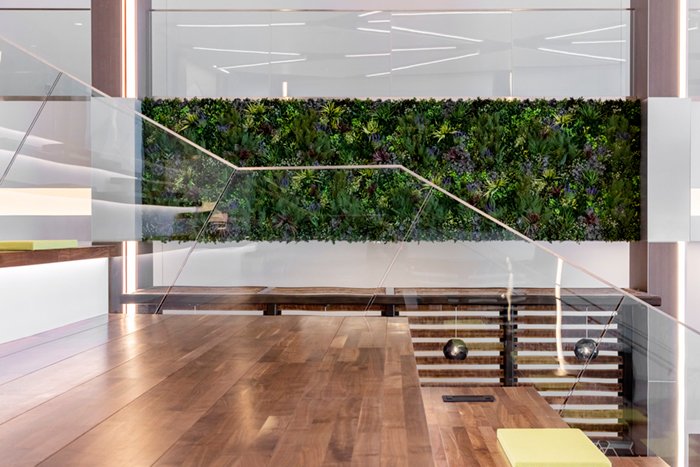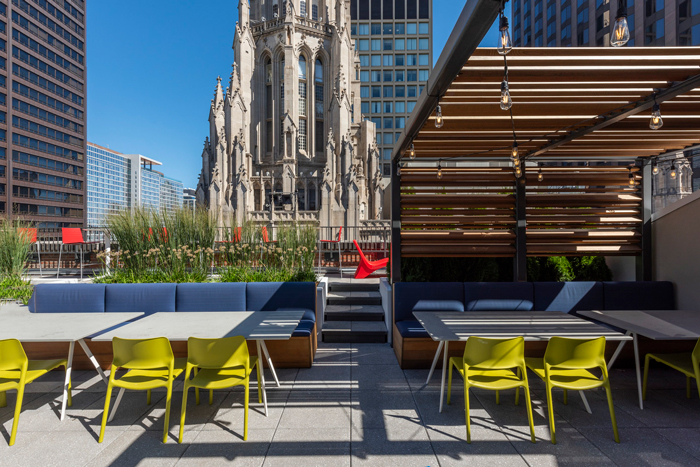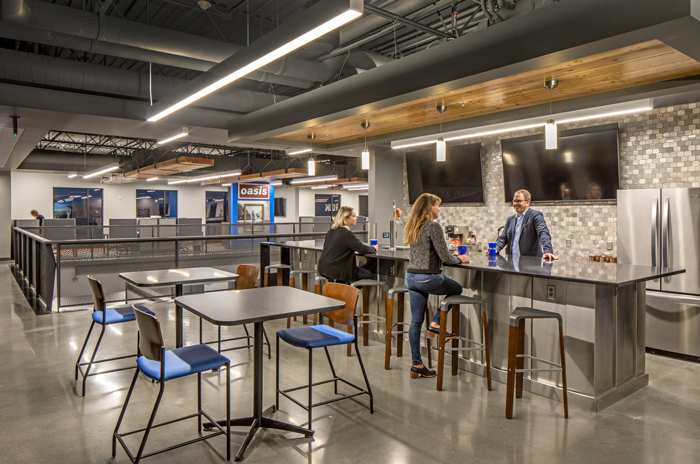
The work-from-home honeymoon was magnificent. With less travel, I had more time to be with family, exercise and virtually collaborate with clients. I initially thought we all could “Zoom” through this pandemic with technology and accelerate adoption of new ways of working.
As days became months—and now over a year—I realize how much in-person connection and collaboration feeds mental and emotional well-being. My recent return to the design studio reignited a creative spark and inspired a new appreciation for togetherness. Destination employers clearly see an opportunity to make a smart investment in fostering community and supporting holistic wellness. These include connections to nature, encouraging healthier habits and measuring progress as an organization.

Infuse Nature into the Office
One place we all felt safer during the pandemic was nature. Go outside, fill your lungs with oxygen and soak in sunlight to feel refreshed. Advancements in building systems like increased airflow, filtration, and operable windows help, but nothing matches the real thing.
Workplace environments can bring the “outside in” with biophilic design elements. Through creative design elements like “living walls” connect people to a natural environment. Investments in outdoor amenity spaces like roof decks, outdoor furniture, park-like zones, and walking paths will help employees work, play and relax.

Personalize Wellness
The silver lining of the pandemic is the humanization of the workforce. Hearing the dog bark during a Zoom meeting, or a young child interrupting to ask a question about homework, opened our eyes to the whole person. In some ways, the virtual world helped us get to know people better and strengthen empathetic connections.
Wellness got more personal, too. Headspace, virtual doctors, and therapy appointments accelerated this past year. Apps for fitness and motion help people develop healthier habits. Beyond sit-to-stand desks, ergonomic furniture, and introducing more natural light, workplaces need to mimic the experience of movement throughout the day, not nine-to-five at a desk.
Amenities like fitness, yoga and quiet spaces will become more common to meet the needs of a healthier workforce. The next evolution will include “activity-based” spaces that allow users to choose the best type of space to perform the task at hand. The variety encourages movement throughout the day, and a potential spark for interaction. Activity-based workplaces free employees to structure their day and make time for in-person gatherings that build collegiality – a key to mental and emotional well-being.

Measure Results
The best way to measure your return on investment is a regular employee engagement survey. This is typical done every 12 to 18 months to give you the pulse of the organization. Happier, more engaged employees will move the needle in measurement areas like individual engagement, motivational culture and a high-performance environment.
Consider adding specific questions about wellness programs and culture. It is the next metric your organization will want to impact. Fostering wellness for your employees will reduce stress and health risks. With everyone reaching their full potential, so does your organization.
This is the second article in a series of perspectives on the “Evolution of Workplace” by Michelle Jones, Director of Interiors at Shive-Hattery
Stay in Touch for Monthly Shive-Hattery Industry Insights

